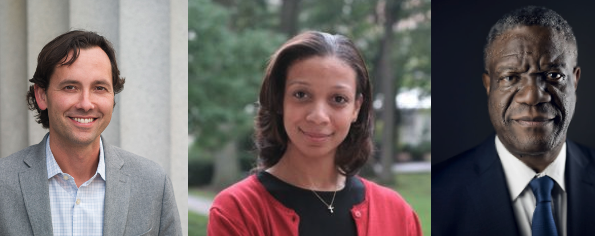Guest post by Jeff Mosenkis of Innovations for Poverty Action

- First some good news – congratulations to development economist and dewormer Ted Miguel, social psychologist of diversity and justice Jennifer Richeson, gynecologist and Nobel laureate, Denis Mukwege of the DRC, and the other newly elected members of the American Academy of Arts and Sciences.
- For researchers working on (or interested in working on) COVID in low- and middle-income countries: to facilitate collaboration, with support from the Gates Foundation, IPA, with J-PAL, CEGA, the IGC, CGD, Northwestern’s Global Poverty Research Lab, & Yale’s Y-RISE, are going to launch a COVID research hub next week listing ongoing research studies (with data & results when ready), funding opportunities, and survey research instruments. If you or anyone you know is working on a COVID project in development, please submit your instruments from the link there so the community can share compatible research tools and coordinate work. And please share with your colleagues!
- Realizing the situation of the job market, IPA’s Peace and Recovery program, led academically by Chris Blattman, is offering a new one-year postdoc related to peace, violence, fragility, and recovery, suitable for someone from econ, political science, psych or related training.
- Massive crop-eating locust swarms are heading back to East Africa, and much bigger than before, while COVID has disrupted the supply chain for pesticides.
- David’s Dev Impact links today include helpful ones on new COVID papers and funding for COVID research.
- A couple of interesting papers using cell phone data with current relevance:
- A new paper from Nicolas Ajzenman, Tiago Cavalcanti, & Daniel Da Mata looks at a country highly politically divided where a President who has a questionable relationship with science minimized the COVID threat in early days and find words matter. They find that after Brazilian president Bolsonaro gave speeches minimizing the importance of social distancing, people in municipalities where he had strong support did less social distancing.
- Sveta Milusheva uses 15 billion mobile phone records in Senegal to track movement from areas with more malaria cases to areas with fewer, and matches it up with data showing an accordant rise in new infections at the destinations. She estimates:
“an infected traveler contributes to 1.7 additional cases reported in the health facility at the traveler’s destination. This paper develops a simulation-based policy tool that uses mobile phone data to inform strategic targeting of travelers based on their origins and destinations. The simulations suggest that targeting informed by mobile phone data could reduce the caseload by 50 percent more than current strategies that rely only on previous incidence.”
- A new paper estimates the return on investment for personal protective equipment for community health workers in low and middle-income countries at $241.1 billion or 6,918% (h/t Grant Gordon). In my brief glance that’s just the immediate ROI; during the Ebola outbreak, researchers estimated the deaths of healthcare workers would lead to more child and maternal deaths even after the outbreak (h/t Dave Evans)
- If you’re having weird or vivid dreams these days, it’s not just you (h/t Osman Siddiqi)
And it’s not your imagination, all commercials are alike these days (h/t David Batcheck)

